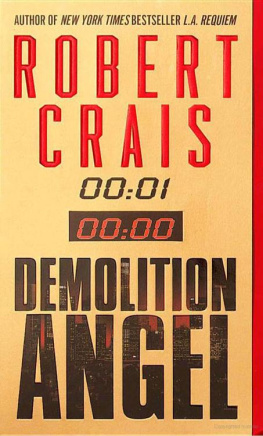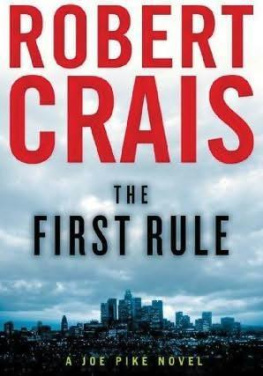Copyright 2009 by Princeton University Press
Published by Princeton University Press, 41 William Street, Princeton, New Jersey 08540
In the United Kingdom: Princeton University Press, 6 Oxford Street,
Woodstock, Oxfordshire OX20 1TW
press.princeton.edu
All Rights Reserved
Crais, Clifton C.
Sara Baartman and the Hottentot Venus : a ghost story and a biography /
Clifton Crais and Pamela Scully.
p. cm.
Includes bibliographical references and index.
ISBN 978-0-691-13580-9 (cloth : alk. paper)
1. Baartman, Sarah. 2. Women, KhoikhoiBiography. 3. Women, Khoikhoi
EuropeHistory19th century. 4. Women, KhoikhoiEuropeSocial conditions.
5. Racism in museum exhibitsEuropeHistory19th century.
6. Museum exhibitsMoral and ethical aspectsEurope. 7. ExploitationEurope
History19th century. I. Scully, Pamela. II. Title
DT1768.K56C73 2009
305.896'104092dc22
[B] 2008014918
FRONTISPIECE. Le Vaillants map marks the direction of his explorations of the Cape. The romantic explorer passed near Sara Baartmans natal home. At the end of the eighteenth century Baartman traveled along the southern route indicated on Le Vaillants map. Carte de Partie Meridionale de lAfrique... aux voyages de Le Vaillant... Map Collection, National Archives of South Africa, Cape Town.
eISBN: 978-0-691-23835-7
R0
DRAMATIS PERSONAE
SARA BAARTMAN, known in Europe as the Hottentot Venus, also as Saartje, Sartjee, and as Sarah Bartmann
DAVID FOURIE, settler, Saras first master
CORNELIUS MULLER, settler, Saras second master
RIDER BAARTMAN, Saras brother
PIETER CESARS, Hendriks brother, Elzers employee, and the man who brought Sara to Cape Town
JAN MICHAEL ELZER, the wealthy butcher, Saras first master in Cape Town
HENDRIK CESARS, husband of Anna Catharina Staal and one of two men who brought Sara to England
ANNA CATHARINA STAAL, wife of Hendrik Cesars
HENDRIK VAN JONG, Saras Dutch partner
JOHANNES JACOBUS VOS, president of the Burgher Senate, to whom Hendrik Cesars was indebted
ALEXANDER DUNLOP, ships surgeon in his Royal Britannic Navy, and doctor at the Cape Slave Lodge, one of two men who brought Sara to England
WILLIAM BULLOCK, owner of the Liverpool Museum, also known as the London Museum and the Egyptian Museum
SAINT ZACHARY MACAULAY, leading abolitionist, who led the investigation into her status in England
SAINT THOMAS BABINGTON, leading abolitionist
STEPHEN GASELEE (also spelled Gaslee), Dunlops attorney, knighted in 1815, Justice of Common Pleas 182437, served as a model for Mr. Justice Stareleigh in Dickenss The Pickwick Papers
DUKE OF QUEENSBERRY (OLD Q), famous London rake who had Sara brought for a viewing at his house in Piccadilly
HENRY TAYLOR, the man who brought Sara to Paris
REAUX, the animal trainer and store owner in Paris and likely member of a theatrical troupe in Cape Town, and Saras last owner
GEORGES CUVIER, scientist and founder of comparative anatomy
SARA BAARTMAN
AND THE
HOTTENTOT VENUS
INTRODUCTION
S ara Baartman and the Hottentot Venus have had mysterious careers. Sara Baartman was born on the South African frontier in the 1770s. She lived nearly three decades in South Africa. She then spent some five years in Europe before dying in Paris at the end of 1815. Sara Baartman loved, and was loved, and for many years before she went to Europe she was a mother and a working woman in the Cape. Yet she has come down to us in history captured by the icon of the Hottentot Venus, a supposedly paradoxical freak of race and sexuality, both alluring and primitive, the very embodiment of desire and the importance of conquering the instincts. Writings on Sara Baartman have subsumed the life of this beautiful woman almost totally in those brief, if momentous, years she spent in Europe displayed as the Hottentot Venus. A short period at the end of her life has come to stand for all that passed before.
In Cape Town, and then in England and in Paris, Sara Baartman as the Hottentot Venus fancied and troubled the minds of people who, in their often quotidian ways, helped fashion the modern world. It was, by all accounts, an extraordinary epoch. During her lifetime American colonists declared their independence and quashed Native American cultures. In Saint Domingue, slaves revolted and created Haiti, a new society free of the plantation master but still full of sorrow. Across Europe revolutions came and went, in France by the stamp of feet and the guillotines percussive thump. Napoleons armies marched and perished. The masses moved in and out of the factories of Manchester, Liverpool, Birmingham, or worked on the docks of the great city of London. The Luddites rioted against the factory system. Gas lighting came to Soho. King George III went insane. The Romantics imagined the beauties of nature, the emotions and the transcendental, the monstrous and the exotic. Scientists measured and classified the world.
























